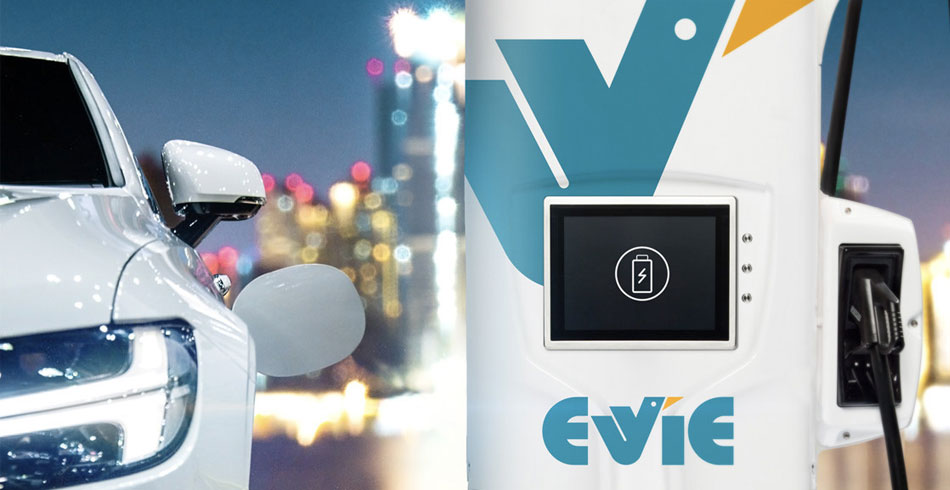In a land of long distances like Australia, the perennial EV problem of range anxiety has hindered the uptake of EV. Dodging trams in a Tesla through inner-city Melbourne is one thing, but the 10-hour drive up the coast or into the bush to visit family is quite another. Given this, ARENA is making EV charging infrastructure a priority in its recent fundings rounds.
ARENA’s latest move is to provide Evie Networks with $15 million in funding to aid in the rollout of a charging network throughout Australia’s highways.
Evie Networks, largely funded by coal baron Trevor St Baker’s St Baker Energy Innovation Fund, and its U.S. partner software company EV Connect are working towards an ultra-fast highway charging network that could deliver a substantial improvement in the affordability and popularity of EV options.
The funding tops up the first phase of the $50.2 million intercity highway network of 350kW ultra-fast chargers located along the ‘National Land Transport Network’ (NLTN), which, according to the Department of Infrastructure, Regional Development and Cities that determines the NLTN, would mean EV owners tired of shiraz and churches in Adelaide can drive all the way to Cairns without fret to enjoy rum, sunshine and the company of Queenslanders.
This initial phase will see a total of 42 charging sites, all powered by renewable energy, installed at roadside service centres connecting Adelaide, Melbourne, Canberra, Sydney and Brisbane, without destination charging in Far North Queensland, Tasmania and Perth. Construction on the first of these sites, situated north of Brisbane, begins today, with Evie confident 23 sites will be operational in a year’s time.
ARENA CEO Darren Miller said Evie Networks’ charging network would further contribute to the infrastructure required to support the uptake of EVs in Australia. “Evie’s fast charging stations across the country will help to increase the supply and adoption of electric vehicles by building the charging infrastructure in key areas along major roads,” said Miller, “Reducing range anxiety will encourage EV uptake by giving motorists confidence they can get where they want to go – even on long road trips.”
Each of the 42 total charging sites will have the capability to charge two cars simultaneously using Tritium chargers. The chargers, which can provide 100km of charge in 15 minutes, are suitable to all EV models, including Tesla with an adaptor.
“We have estimated that Australia needs around 350 sites to cover all the highways that make up Australia’s National land Transportation Network,” said Evie Networks’ CEO Chris Mills, “while many consumers will charge at home, they will also need plenty of fast chargers in towns, suburbs and cities. There are currently around 6,500 petrol stations. This is just the beginning of the infrastructure build out.”
ARENA shares Mills’ presumption as to the size of the eventual EV network around Australia, hence why the Agency committed another $6 million to the countries’ only public ultra-rapid EV charging network, Chargefox, last year. Chargefox is working on an additional 21 charging sites on Australia’s highways.
Last year ARENA and CEFC published a report predicting the uptake of EVs would increase significantly in the next decade as parity with petrol cars was met and improved upon. However, without a large charging network the uptake of EVs in Australia is severely limited.
In that knowledge ARENA’s $15 million funding to Evie Networks is an imperative akin to that of Aussie rock legend Stevie Wright: “Evie, Evie, Evie let your hair hang down.”
This content is protected by copyright and may not be reused. If you want to cooperate with us and would like to reuse some of our content, please contact: editors@pv-magazine.com.









1 comment
By submitting this form you agree to pv magazine using your data for the purposes of publishing your comment.
Your personal data will only be disclosed or otherwise transmitted to third parties for the purposes of spam filtering or if this is necessary for technical maintenance of the website. Any other transfer to third parties will not take place unless this is justified on the basis of applicable data protection regulations or if pv magazine is legally obliged to do so.
You may revoke this consent at any time with effect for the future, in which case your personal data will be deleted immediately. Otherwise, your data will be deleted if pv magazine has processed your request or the purpose of data storage is fulfilled.
Further information on data privacy can be found in our Data Protection Policy.